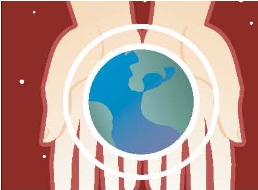by Leigh Wellsview
Unfortunately, travel is one of the single biggest causes of carbon dioxide emissions we know of. Some estimates show that flying, ecologically the worst mode of transit, accounts for around five percent of our total carbon emissions. Travel certainly isn’t completely bad, however—if we all stopped flying, millions of people would be out of tourism-related lobs and in developing countries where, according to The United Nations World Tourism Organisation, resources other than tourism are often lacking, growing economies could be destroyed.
Happily, there are several ways to offset the strain traveling puts on the environment. In fact, the term carbon offset is a catch-phrase as of late in the travel industry. Essentially, carbon offsets are a modern day indulgence (a medieval practice of buying your way out of your sins), where you can pay a certain amount of money to reduce the impact of your global footprint. In actual fact, what you are doing is funding research and development for sustainable energy sources, responsible development in emerging nations, and other long-term initiatives that are meant to, over the course of decades, atone for your current-day emissions spewing practices. While some airlines are now offering you the option of purchasing an offset plan at the same time as your ticket, there is also the more flexible option of going with a third-party company.
We especially like TerraPass, www.terrapass.com, which has easy calculators to let you know just how much CO your trip home creates and how much it will cost you to fly ‘carbon neutral’. For instance, for me to fly roundtrip from Tokyo back to my hometown of Victoria, Canada, I would need to pay $36.95 to offset the two tons of CO2 produced. TerraPass, which proves its legitimacy by being audited by non-profit organization Center for Resource Solutions, also provides offset packages for your driving, home, dorm, and even wedding!
Looking for a more tangible and instantly gratifying way to offset your travel? Consider turning your next tropical getaway into a conservation-based ‘volunteer vacation’. British-based company Real Gap Experience, famous for sending youths under thirty around the world on all sorts of adventures, has expanded to offer ‘GAP Years for Grownups’, through which you can become involved in all sorts of exciting, unique, and environmentally beneficial projects. For Instance, head to the Amazon where you can help save the lives of turtles at the Pacaya-Samiria National Reserve in Peru, swim with dolphins as you carry out research and help prevent illegal poaching, or venture into the Kruger National Park in South Africa as you learn to assist park wardens in their daily duties and game management
GAP year trips can last from just a week or two to more than a year and the company is willing to work with travelers to help customize their experience. Through GAP Year for Grownups you can visit a number of countries throughout Asia, Africa, Eastern Europe, and North and South America.
Bon voyage!








